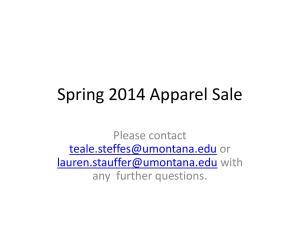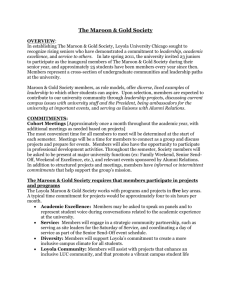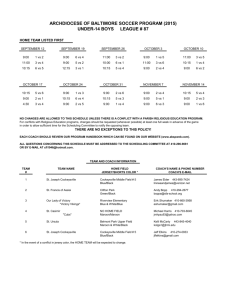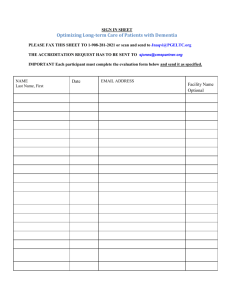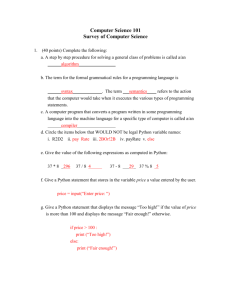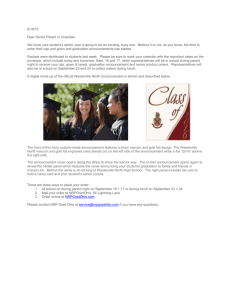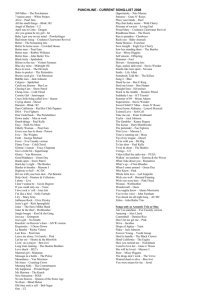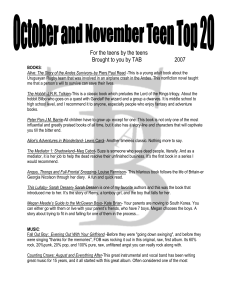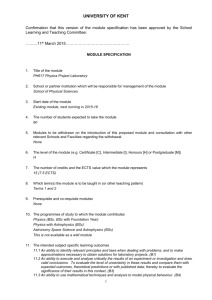New Dorp High School
advertisement
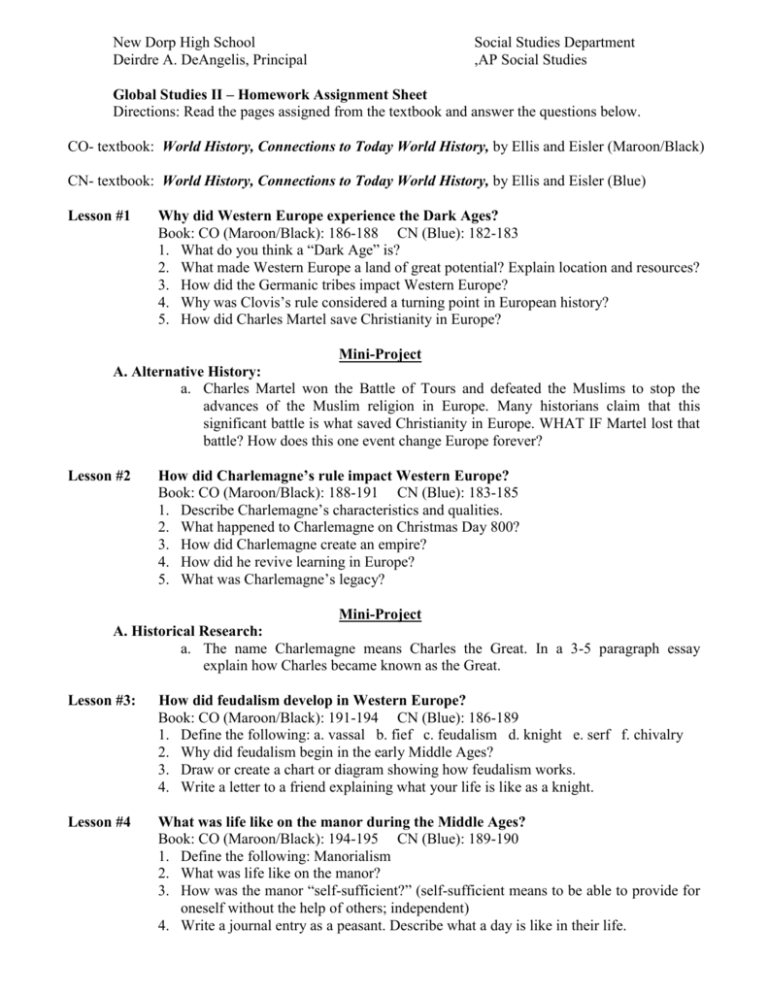
New Dorp High School Deirdre A. DeAngelis, Principal Social Studies Department ,AP Social Studies Global Studies II – Homework Assignment Sheet Directions: Read the pages assigned from the textbook and answer the questions below. CO- textbook: World History, Connections to Today World History, by Ellis and Eisler (Maroon/Black) CN- textbook: World History, Connections to Today World History, by Ellis and Eisler (Blue) Lesson #1 Why did Western Europe experience the Dark Ages? Book: CO (Maroon/Black): 186-188 CN (Blue): 182-183 1. What do you think a “Dark Age” is? 2. What made Western Europe a land of great potential? Explain location and resources? 3. How did the Germanic tribes impact Western Europe? 4. Why was Clovis’s rule considered a turning point in European history? 5. How did Charles Martel save Christianity in Europe? Mini-Project A. Alternative History: a. Charles Martel won the Battle of Tours and defeated the Muslims to stop the advances of the Muslim religion in Europe. Many historians claim that this significant battle is what saved Christianity in Europe. WHAT IF Martel lost that battle? How does this one event change Europe forever? Lesson #2 How did Charlemagne’s rule impact Western Europe? Book: CO (Maroon/Black): 188-191 CN (Blue): 183-185 1. Describe Charlemagne’s characteristics and qualities. 2. What happened to Charlemagne on Christmas Day 800? 3. How did Charlemagne create an empire? 4. How did he revive learning in Europe? 5. What was Charlemagne’s legacy? Mini-Project A. Historical Research: a. The name Charlemagne means Charles the Great. In a 3-5 paragraph essay explain how Charles became known as the Great. Lesson #3: How did feudalism develop in Western Europe? Book: CO (Maroon/Black): 191-194 CN (Blue): 186-189 1. Define the following: a. vassal b. fief c. feudalism d. knight e. serf f. chivalry 2. Why did feudalism begin in the early Middle Ages? 3. Draw or create a chart or diagram showing how feudalism works. 4. Write a letter to a friend explaining what your life is like as a knight. Lesson #4 What was life like on the manor during the Middle Ages? Book: CO (Maroon/Black): 194-195 CN (Blue): 189-190 1. Define the following: Manorialism 2. What was life like on the manor? 3. How was the manor “self-sufficient?” (self-sufficient means to be able to provide for oneself without the help of others; independent) 4. Write a journal entry as a peasant. Describe what a day is like in their life. Mini-Project A. Choose one of the following: a. Draw or create a medieval manor on poster-board, construction paper, or oak-tag. Make sure to include everything that would be on a medieval manor. b. Write a song or poem describing your life as a serf or peasant. Lesson #5 Why was the Catholic Church the most dominant force during the Middle Ages? Book: CO (Maroon/Black): 195-200 CN (Blue): 191-196 1. Define the following: a. sacrament b. tithe c. excommunicate d. canon law e. anti-Semitism 2. What was the role of the Catholic Church during the Middle Ages? 3. Explain the Benedictine rule. 4. Why is Pope Gregory VII important? 5. How was anti-Semitism visible in the Middle Ages? Lesson #6 How did economic growth take place in Western Europe during the Middle Ages? Book: CO (Maroon/Black): 201-205 CN (Blue): 197-201 1. Define the following: a. guild b. apprentice c. usury d. middle class 2. What changes occurred due to the Agricultural Revolution? 3. How did trade increase during the Middle Ages? 4. What was the role of the guild during Middle Ages? 5. Describe town and city life in Middle Ages. 6. Making Connections: In today’s society, what resembles a “guild?” Explain. Lesson #7 How did William of Normandy impact England? Book: CO (Maroon/Black): 210-212 CN (Blue): 207-208 1. Why was the Battle of Hastings important? 2. What did William of Normandy become? 3. What does the Doomsday Book? 4. What was the purpose of the Magna Carta? 5. Making Connections: Does something like the Doomsday Book exist in today’s society? Mini-Project A. Historical Research: a. Why is the Magna Carta one of the most important documents in world history? Explain in a 3-4 paragraph essay. Lesson #8 Why were there conflicts between the pope and kings during the Middle Ages? Book: CO (Maroon/Black): 216 CN (Blue): 213 1. Define the following: a. lay investiture 2. Identify the following: a. Gregory VII b. Henry IV 3. What was the lay investiture controversy? Mini-Project A. Political Cartoon: a. The lay investiture controversy was one of the most important disagreements in world history. The pope expressed his power over royal authority proving that the Church was the major authority in Europe. Draw a cartoon depicting the controversy between Gregory VII and Henry IV. Use illustrations and captions to tell the story. Lesson #9 What were the causes for the Crusades? Book: CO (Maroon/Black): 220-222 CN (Blue): 216-217 1. Define and identify the following: a. crusade b. Pope Urban II c. Saladin 2. Why did Pope Urban II call for the Crusades? 3. How did he get the crusaders to join? What did he promise them? 4. Why did the Crusades fail? Explain. Mini-Project A. Choose one of the following: a. Make a pamphlet or advertisement recruiting for the Crusades. b. History vs. Hollywood: The Crusades is one of the most important events of the last one thousand years. There are many ways to get the message of the Crusades across and the movie: The Kingdom of Heaven attempts to do just that. How accurate is the movie to the actual Crusades? Watch the film and find THREE historical accuracies and THREE Hollywood additions to the film. Lesson #10 Why were the Crusades a turning point in history? Book: CO (Maroon/Black): 222 CN (Blue): 217-218 1. Define the following: a. turning point 2. The Crusades were known as a “successful failure,” Why? Discuss the legacy or impact of the Crusades. 3. Historical Research: Although the Crusades were an attempt to regain the Holy Land, they ultimately all failed in their goal. However, between the years 1095-1272 there were many attempts to regain the Holy Land by Christian kings, religious leaders and the least known attempt was by children. The Children’s Crusade is one of the more interesting crusading attempts by Christians. In a 3-4 paragraph essay explain what the Children’s Crusade was and what happened. Lesson #11 How did the Black Plague impact the world? Book: CO (Maroon/Black): 228-231 CN (Blue): 225-228 1. Where did the Plague start? 2. How did is spread? 3. What were the effects of the Plague on society and the economy? 4. Making Connections: The Mongols used biological warfare and spread the Black Plague. Do you believe the U.S is ready to fight off a biological attack? Mini-Project A. Historical Research: The Plague was the epidemic of the Middle Ages, are there any world epidemics facing the world today? Lesson #12 How did the Hundred Years War affect France and England during the Late Middle Ages? Book: CO (Maroon/Black): 231-233 CN (Blue): 228-229 1. What were the causes of the Hundred Years War? 2. What were the new weapons introduced during this war? 3. Why was Joan of Arc’s involvement a turning point in the war? What was her fate? 4. List the lasting effects of the Hundred Years War? Mini-Project A.: Critical Thinking: Joan of Arc believed that God spoke to her and inspired her to help France win their freedom. Do you think that Joan of Arc was religiously inspired or just crazy? Lesson #13 How did the Ottoman Turks create a great empire? Book: CO (Maroon/Black): 276-279 CN (Blue): 272-275 1. Define and identify the following: a. janissary b. millet c. Suleiman the Magnificent 2. How did the ottomans defeat the Byzantine Empire? 3. Why was Suleiman known as the Magnificent? Lesson #14 How did the Muslims impact India? Book: CO (Maroon/Black): 272-275 CN (Blue): 267-271 1. What were the origins of the Delhi Sultanate? 2. What were differences between Hindus and Muslims in the Delhi Sultanate? 3. How did Babur found the Mughal Dynasty? 4. Explain the role of Akbar the Great in the Mughal Dynasty. Mini-Project A.: Historical Research: The Taj Mahal was built by Shah Jahan of the Mughal. Explain the quote, “The Taj Mahal was built out of love” in a 3-4 paragraph essay. Explain why. Lesson #15 How did geography impact the development of African civilization? Book: CO (Maroon/Black): 284-288, 297-301 CN (Blue): 280-283, 293-297 1. Identify the following: a. the Sahara Desert b. the Nile River c. desertification d. the Bantu Migration 2. Describe the Bantu Migrations and its impact of Africa. 3. Describe the family patterns in early African society? 4. What were the religious beliefs of early Africans? 5. Describe the role of the Griot. Lesson #16 What were the great civilizations of Africa? Book: CO (Maroon/Black): 289-293 CN (Blue): 284-288 1. Identify the following: a. Mansa Musa b. Sundiata c. Sunni Ali d. Askia Muhammad 2. What was the role of trade in the West African Kingdoms? 3. How did Mansa Musa turn Mali into a Muslim Kingdom? 4. Historical Research: A famous traveler visited the Kingdom of Mali named Ibn Battuta. In a paragraph, explain what he thought of Mali under Mansa Musa. Lesson #17 How did civilizations develop in the Americas? Book: CO (Maroon/Black): 158-162 CN (Blue): 156-159 1. What is Mesoamerica? 2. Describe geography in the Americas. 3. Describe Mayan religion. 4. List THREE achievements of the Maya. 5. How did the Mayan people decline? Mini-Project A.: History vs. Hollywood: Mel Gibson’s Apocolypto is said to be very accurate, but how accurate is it? Watch the film and find THREE historical truths and THREE Hollywood additions. Lesson #18 How did the Aztecs develop a great civilization in Mexico? Book: CO (Maroon/Black): 162-164 CN (Blue): 159-162 1. Define the following: a. Chinampa b. tribute 2. What were the Aztecs religious beliefs? 3. Why were the Aztecs a tribute empire? 4. What were some of the achievements made in education and learning? Lesson #19 How did the Incas develop a sophisticated civilization? Book: CO (Maroon/Black): 165-169 CN (Blue): 163-167 1. What was the purpose of quipu? 2. Describe the daily life of the Inca. Include farming, metalworking, medicine and religion. 3. Making Connections: How do the Inca compare to Ancient Romans? Mini-Project A.: Historical Content: Using yarn or string make something in Quipu. You can make a quipu of your year of birth, the year you graduated junior high school, or a significant year in your life. Lesson #20 How did geography affect life in Japan? Book: CO (Maroon/Black): 323-324 CN (Blue): 316-317 1. Define the following: a. archipelago b. ethnocentrism c. isolation d. Kami e. Shintoism 2. Describe Japanese geography. 3. Making Connections: How does Japanese geography differ from other early civilizations? Lesson #21 How did China and Korea influence Japanese life? Book: CO (Maroon/Black): 324-326 CN (Blue): 317-319 1. Describe how Japan was influenced by Korea? 2. How did Prince Shotoku help shape Japanese culture? 3. What is selective borrowing? 4. What did Japan selectively borrow from China? Lesson #22 How did Japan become a feudal society? Book: CO (Maroon/Black): 327-331 CN (Blue): 320-325 1. Define the following: a. daimyo b. samurai c. bushido d. kabuki e. haiku f. seppuku g. Zen-Buddhism 2. How did feudalism develop in Japan? 3. Imagine you are a samurai; write a letter to a friend explaining what it is like to be a samurai. 4. Making Connections: In a graphic organizer or chart compare Japanese feudalism to European feudalism. Mini-Project A.: Historical Content: Haiku is a form of poetry in Japan. Write your own haiku about a famous historical person. Lesson #23 How did the Tang and Song Dynasties affect China? Book: CO (Maroon/Black): 308-314 CN (Blue): 302-307 1. Choose TWO of the following areas under the Tang and Song Dynasties and explain how both Dynasties affected them: a. government b. economy c. society 2. Choose Two achievements under the Tang and Song Dynasties and describe them. Lesson #24 How did the Mongols create a world empire? Book: CO (Maroon/Black): 314-316 CN (Blue): 308-309 3. Describe life as a Mongol before Genghis Khan. 4. Historical Research: Why was the Mongol army known as the “war machine?” 5. How did the Mongols rule the areas they conquered? Mini-Project A.: Alternative History: Genghis Khan is responsible for the unification of the Mongol tribe and because of this they were able to dominate Asia, the Middle East and parts of Europe. But WHAT IF Genghis Khan never unified the Mongols, how different would the world be? Lesson #25 How did the Mongol conquests affect Europe and Asia? Book: CO (Maroon/Black): 246, 316-318 CN (Blue): 241-242, 310 1. How did the Mongols affect the following areas: a. Russia b. China 2. How did Kublai Khan rule the Yuan Dynasty? 3. Making Connections: Explain the following quote in a 3-4 paragraph essay, “Marco Polo made the world smaller.” How did he do that? Lesson #26 How was the Ming Dynasty established in China? Book: CO (Maroon/Black): 318-320 CN (Blue): 310-312 1. How was the Ming Dynasty created? 2. Why was there a revival in the economy, arts and literature during the Ming? 3. Who was Zheng He? Why should he be remembered? Mini-Project A.: Alternative History: In 1433 Zheng He, China’s greatest explorer died. With his death the Chinese emperors turned their attention to Chinese matters, closed their ports and borders and stopped exploring. But WHAT IF Zheng He did not die and China kept exploring, how different would the world be? What might have happened? Lesson #27 Why did the Renaissance begin in Italy? Book: CO (Maroon/Black): 344-346 CN (Blue): 336-338 1. Define the following: a. Renaissance b. humanism c. patron 2. Why did the Renaissance begin in Italy? List reasons why. 3. Identify the following: a. Francisco Petrarch b. the Medici Family Lesson #28 How did Renaissance art differ from Medieval art? Book: CO (Maroon/Black): 346-348 CN (Blue): 338-340 1. Identify the following: a. Da Vinci b. Michelangelo c. Raphael 2. What were the characteristics and qualities of Renaissance art? 3. Making Connections: What are the differences between Renaissance art and Medieval art? Lesson #29 How did Renaissance writers influence the modern world? Book: CO (Maroon/Black): 347-349 CN (Blue): 340-342 1. Describe the ideas of Castiglione’s Book of the Courtier. 2. Who was Machiavelli? 3. What advice did he give to the leaders in The Prince? 4. Do you agree with his ideas? Mini-Project A.: Making Connections: Machiavelli is a very influential writer and his ideas have inspired many leaders. Have modern political leaders followed his advice? Give examples of ONE political leader that has used his philosophy. Lesson #30 How did the Renaissance spread to Northern Europe? Book: CO (Maroon/Black): 349-353 CN (Blue): 342-345 1. Identify the following: a. Erasmus b. Shakespeare c. Cervantes d. Dürer e. Gutenberg 2. Why is Gutenberg one of the most influential men in world history? Lesson #31 Why did the Catholic Church face criticism during the Renaissance? Book: CO (Maroon/Black): 353-356 CN (Blue): 346-348 1. Define the following: a. recant b. indulgence c. Protestant d. 95 Theses 2. List the abuses of the Catholic Church during the Renaissance. 3. Who was Martin Luther? Why were the 95 Theses important? 4. What was the pope’s reaction to Martin Luther? 5. How did Gutenberg’s invention aid Martin Luther? Mini-Project A.: Alternative History: In 1517 Martin Luther openly challenged the Catholic Church which up until this point was never a successful venture. Luther caused a rift in the Catholic religion that would never be repaired, but WHAT IF Luther was unable to continue preaching. WHAT IF the Catholic Church captured and executed him before his ideas spread, how would history be different? Explain in a 3-4 paragraph essay. Lesson #32 How did Luther’s ideas inspire other Protestant leaders? Book: CO (Maroon/Black): 357-359 CN (Blue): 348-352 1. Define and identify the following: a. Jean Calvin b. Henry VIII c. predestination d. Anglican Church e. theocracy f. annul 2. What were the beliefs of Jean Calvin? 3. Why was Henry VIII in conflict with the Catholic Church? 4. How did he create the Church of England? Lesson #33 How did the Catholic Church respond to the Protestant Reformation? Book: CO (Maroon/Black): 360-363 CN (Blue): 353-355 1. Identify the following: a. Council of Trent b. Ignatius of Loyola c. Inquisition 2. What decisions did the Church make at the Council of Trent? 3. What was the purpose of the Inquisition? Mini-Project Choose one of the following: A.: Historical Research: a. The Index of Forbidden Books was in use into the 1900’s. Find out the names of TWO other books on the list and explain why they were on the list. b. The Inquisition was used by the Church to expel heresies and punish the people who were against the Church. Identify TWO torture devices used by the Inquisition and explain their background and whether or not they were effective. Lesson #34 How did the Scientific Revolution change the views of the world? Book: CO (Maroon/Black): 364-367 CN (Blue): 356-359 1. Define the following: a. heliocentric b. geocentric c. scientific method 2. Identify the following: a. Copernicus b. Galileo c. Newton d. Bacon Descartes 3. In your opinion, which one was the most influential? 4. Historical Content: Explain the quote: “The Church was now defending itself on two-fronts (religious and scientific).” Explain what this means. Lesson #35 Why did European nations explore the world? Book: CO (Maroon/Black): 372-378 CN (Blue): 364-368 1. List and explain TWO motives for exploration. 2. Identify TWO technological developments that made exploration possible. 3. Identify the following: a. Henry the Navigator b. Magellan c. da Gama d. Columbus Lesson #36 How did the Spanish conquests affect Native Americans? Book: CO (Maroon/Black): 394-397 CN (Blue): 386-388 1. Define and identify the following: a. conquistador b. Cortes c. Malinche d. Pizzaro 2. Describe the first encounter between the Natives and Spanish conquistadors. 3. How did Cortes affect the Aztec Empire? 4. How did Pizzaro affect the Incan Empire? 5. List TWO reasons why the Spanish were successful in conquering the Natives. Lesson #37 How did the Spanish govern the Native Americans? Book: CO (Maroon/Black): 397-400 CN (Blue): 389-393 1. Define the following: a. viceroy b. Encomienda c. Creole d. Peninsulares e. Mestizo f. mulatto 2. Explain TWO ways Spanish rule impacted the Americas. 3. What was the role of Bartolomé de Las Casas? Lesson #38 How were Africans affected by the slave trade? Book: CO (Maroon/Black): 405-410 CN (Blue): 398-402 1. How did the Atlantic slave trade begin? 2. What was the triangular trade? 3. Imagine you were an African; describe the horrors of the Middle Passage. 4. Describe how African leaders resisted the slave trade. 5. What was the impact of the slave trade? Lesson #39 How did the Columbian Exchange create a “global world?” Book: CO (Maroon/Black): 410-412 CN (Blue): 403-406 1. Define the following: a. Columbian Exchange 2. List the goods that were exchanged between the Old World (Europe) and the New World (the Americas). 3. What impact did the Columbian Exchange have on the world’s population? Lesson #40 What was the impact of the Commercial Revolution? Book: CO (Maroon/Black): 411-415 CN (Blue): 404-407 1. Define the following: a. capitalism b. entrepreneur c. joint-stock company d. mercantilism 2. How did capitalism expand trade? 3. How were colonies or oversea empires affected by mercantilism? 4. How were ordinary people’s lives changed during the Commercial Revolution? Lesson #37 How did absolutism affect France? Book: CO (Maroon/Black): 426-430 CN (Blue): 416-420 1. Define and identify the following: a. absolute monarch b. Huguenot c. Cardinal Mazarin d. Cardinal Richelieu e. Louis XIV 2. How did Richelieu and Mazarin strengthen royal authority? 3. What are the qualities of King Louis XIV? 4. Louis XIV said “"L'État, c'est moi" ("I am the State"). What does this quote mean? 5. How did Louis XIV create a golden age in France? 6. List TWO successes and TWO failures of Louis XIV’s reign. Mini-Project A.: Historical Content: Louis XIV is one of the most influential monarchs in world history. He is responsible for turning France into the cultural center of the world. Louis XIV was also known as the “Sun King.” In a 3-4 paragraph essay explain why he was known as the Sun King. Lesson #38 How did England become a limited monarchy? Book: CO (Maroon/Black): 430-435 CN (Blue): 421-426 1. How did King James I rule England? 2. What was the English Civil War? What happened to King Charles I? 3. What was the Glorious Revolution? 4. What was the English Bill of Rights and Habeas Corpus? Lesson #39 How did Austria and Prussia create empires? Book: CO (Maroon/Black): 436-439 CN (Blue): 427-430 1. Explain the causes of the Thirty Years War. 2. Explain TWO actions taken by Maria Theresa to strengthen the Austrian Empire. 3. Explain steps taken by Frederick II to strengthen Prussia. Lesson #40 How was the Russian Empire created? Book: CO (Maroon/Black): 440-443 CN (Blue): 431-435 1. Define the following: a. tsar/czar b. Westernization c. boyar 2. How did Peter the Great change Russia? 3. Why did he want a warm-water port? 4. What was Peter the Great’s legacy? 5. How did Catherine the Great rise to power? 6. What was Catherine the Great’s legacy? FINAL Mini-Project A.: Historical Content: If you had the opportunity to travel back in time and take a famous historical leader to dinner, who would it be and why? Create a 5-8 question interview with that person. What would you ask the leader? What would you want to know? Use historical facts to answer your questions and be creative. You can choose any body from history but here is a list of some choices: a. Peter the Great b. Catherine the Great c. William of Normandy d. Genghis Khan e. Kublai Khan f. Martin Luther g. Henry VIII h. Hernán Cortes i. Christopher Columbus j. Galileo
